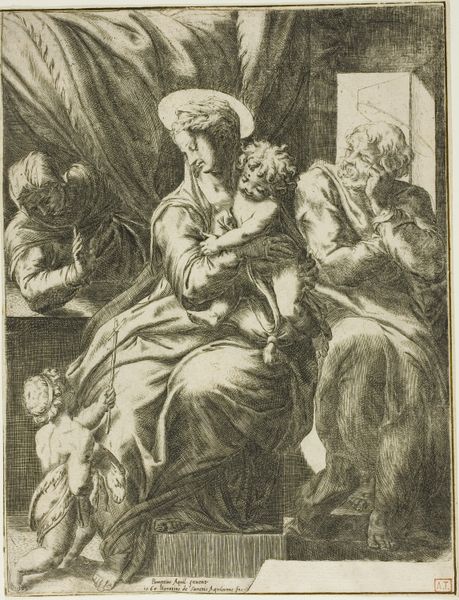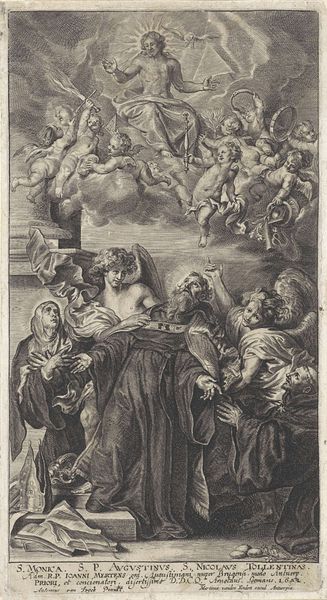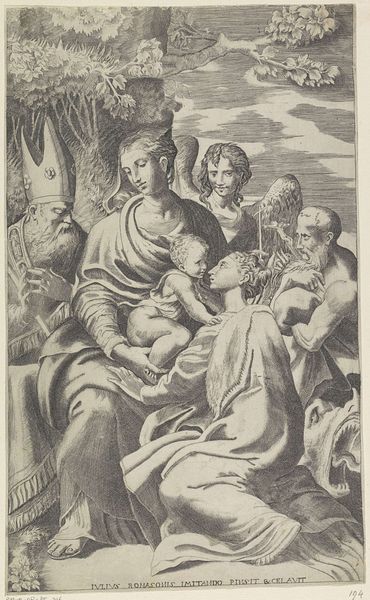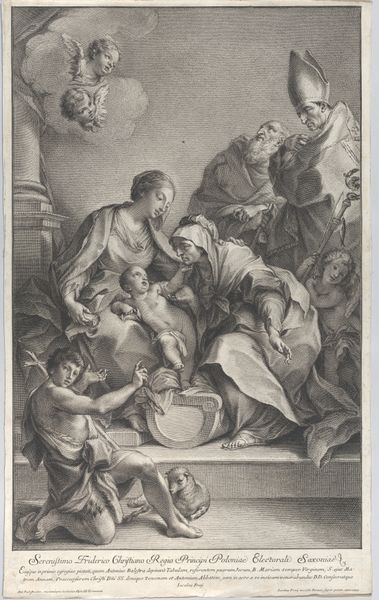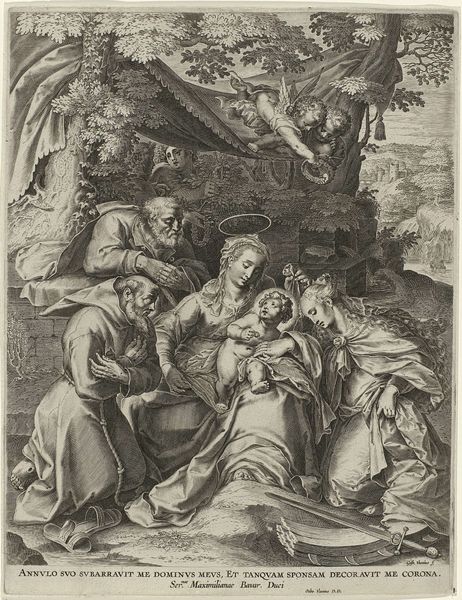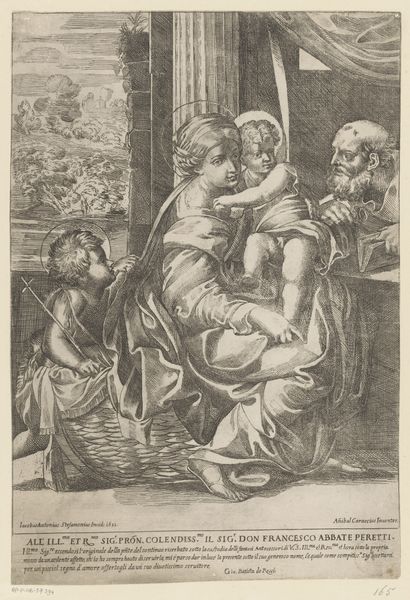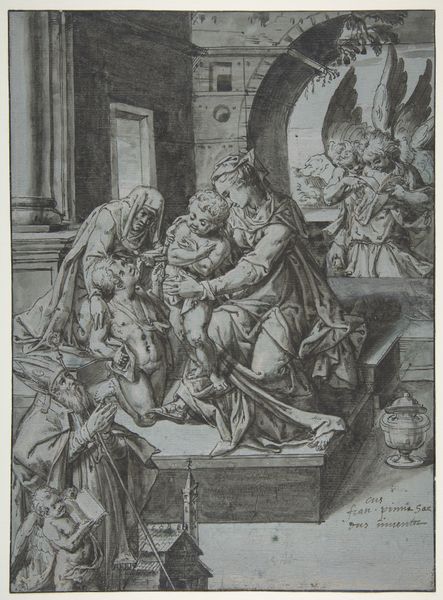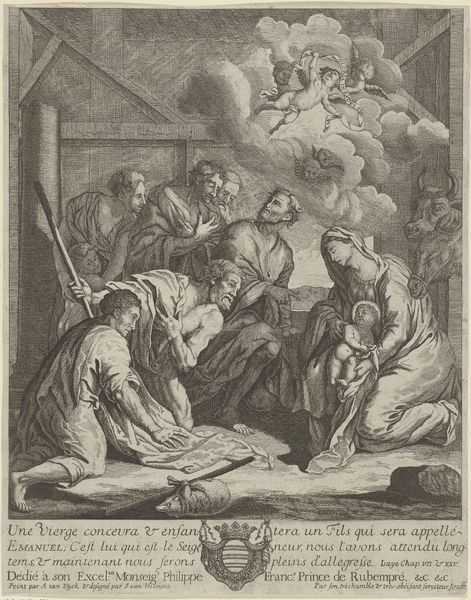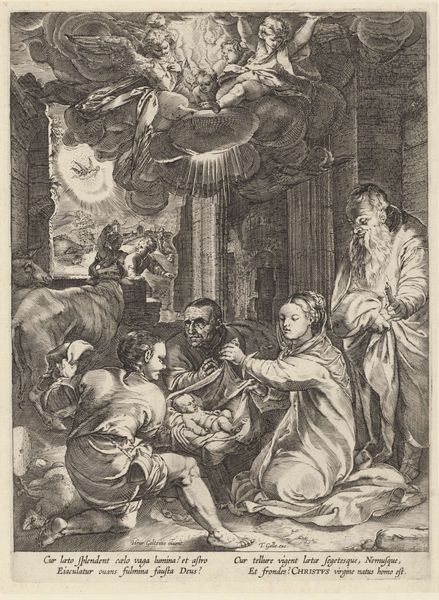
print, engraving
#
narrative-art
#
baroque
# print
#
old engraving style
#
figuration
#
history-painting
#
engraving
Dimensions: height 231 mm, width 180 mm
Copyright: Rijks Museum: Open Domain
Editor: Here we have Bartolomeo Biscaino’s “The Circumcision of Christ,” an engraving dating from around 1640 to 1657. It’s incredibly detailed for a print, almost overwhelmingly so. What do you see in this piece, beyond the obvious biblical scene? Curator: It's a fascinating tableau, isn't it? But what I find truly compelling is the way Biscaino grapples with power dynamics here. Consider the historical context: in the 17th century, representations of religious events were often deployed to reinforce existing social hierarchies. Does this image challenge that, or reinforce it? Editor: I hadn’t thought of that. It does seem pretty traditional – Mary looks very passive, the men are the active participants… Curator: Exactly. And what about the children in the foreground? Are they innocent cherubs, or do they symbolize something more complex within the narrative? Remember, art doesn't exist in a vacuum. This image is a product of its time, reflecting and perhaps subtly critiquing the patriarchal structures of 17th-century society. How do the gazes of the figures influence your understanding? Editor: That’s a great point. The older men seem to hold all the power through their knowledge, their gaze directed downwards... whereas Mary averts hers. Is the circumcision shown as the introduction of a baby boy into a community governed by men? Curator: Precisely! And consider the composition itself - the way the artist positions the figures. What power dynamics are visible through these structural elements? Editor: The angles certainly lead you to view the event through their eyes and perspectives. I never thought of engravings having this much depth. Curator: Absolutely. Art like this becomes a lens through which we can examine the social and political landscape of the time. Considering its legacy, and perhaps our complicity, adds even more layers. Editor: Wow, I'll never look at Baroque art the same way again. There is so much here.
Comments
No comments
Be the first to comment and join the conversation on the ultimate creative platform.
